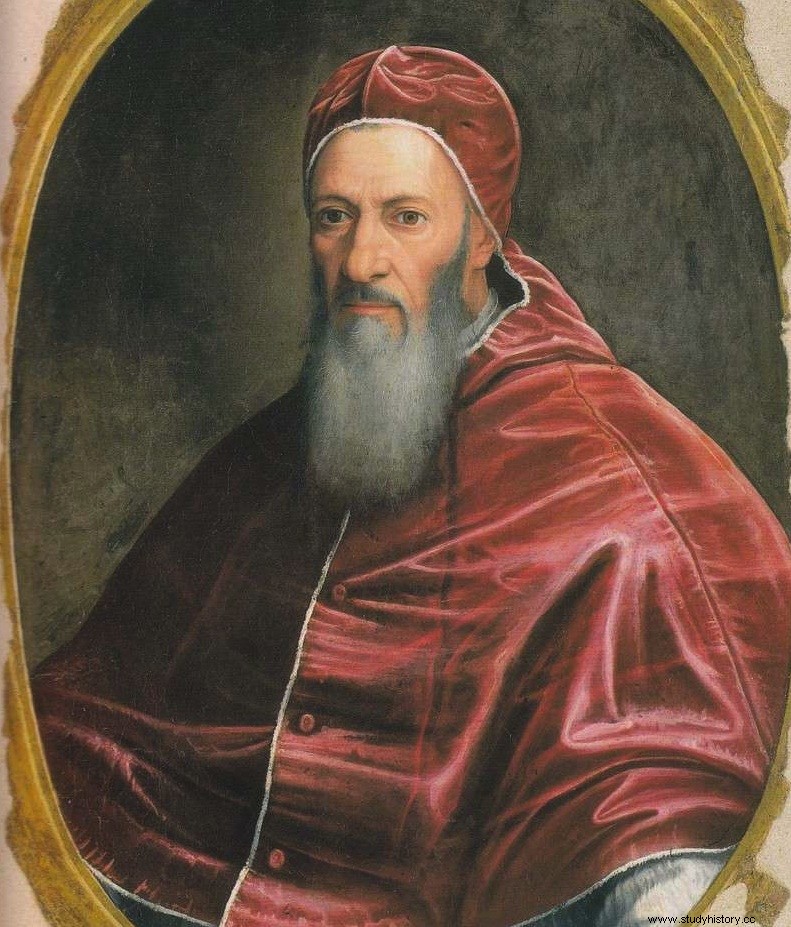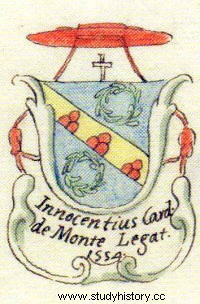Nepotism derives from nepote (nephew) and refers to the favorable treatment of the Popes regarding their nephews whom they named cardinals, originating the figure of the nephew cardinal during the Middle Ages and that would last until 1692 when Pope Innocence XII promulgated the bull Romanum decet Pontificem :
The figure of the cardinal-nephew is eliminated and the relatives who can be appointed cardinals are limited to one.
In this way, the Popes surrounded themselves with faithful relatives and, by having recognized special prebends with respect to the rest of the cardinals, they could maneuver in the shadows to ensure that the succession to the throne of Saint Peter remained within the family. Later, its use became generalized and it has come to be defined, according to the RAE, as the disproportionate preference that some give to their relatives for concessions or public jobs. Today we will talk about Santino , a cardinal nephew… a bit special.

July III
Santino was a street boy who started working at a very young age as a servant for the Ciocchi del Monte house, a powerful family of lawyers and magistrates from Monte San Savino (Tuscany, Italy), to which belonged Giovanni María , at that time pontifical legate of Parma and Piacenza. The friendship between the cleric and the servant was born thanks to a monkey, Giovanni's pet. Although as a servant he left much to be desired, in fact the family was considering throwing him out, thanks to the care and treatment he gave the monkey during Giovanni's absences in the exercise of his position, he appointed him his personal assistant. With the support of another member of the family, Cardinal Antonio Maria, Giovanni rose rapidly through the ecclesiastical hierarchy, always with Santino at his side. The boy, who only knew the street school, did not know how to read or write, so Giovanni tried to give him a minimum education and entrusted this task to the humanist Onorato Fascitelli. There was no way, Santino was not for the job. As he saw that he would not make a career of him, Giovanni, already a cardinal, appointed him rector of the Arezzo cathedral chapter, a symbolic position but one that already provided his protégé with certain income.
From the beginning, the rumors regarding his possible homosexual relationship ("close friendship" they called it) traveled the streets, but everything was precipitated in the Council of Trent (1545). Giovanni, as papal legate, was in charge of preparing the topics to be debated and delivering the opening speech for the sessions, and that's where he took Santino. The ambassadors of the different European chancelleries who came to Trento were scandalized by the attitude of the cardinal towards that 13-year-old boy ("Cardinal Ciocchi del Monte takes that little rascal to his room and to his own bed «), So Giovanni cut to the chase and ordered his brother Baldovino to adopt him. Here ends the story of Santino... and begins that of Innocenzo Ciocchi del Monte , nephew of Cardinal Giovanni.
In 1550, when Giovanni was appointed Pope as Julius III , Innocenzo, only 17 years old and almost illiterate, was made cardinal-nephew. Despite showing himself unsuitable for the position and the distrust he provoked in the rest of the curia - they called him Scimmia il Cardinale (the monkey Cardinal) and not because he was a monkey, which he also was, but because of that pet that brought them together-, the Pope always kept him close to him and, furthermore, his privileges, his positions and, above all, his income were growing more and more. In the mouth of the French poet Joachim du Bellay…
To see a servant, a child, a beast,
a rogue, become a cardinal,
for taking good care of a monkey,
a Ganymede [beautiful Zeus-loving Trojan prince] with the red on his head [cardinal hat]
These miracles only happen in Rome.

Coat of Arms of Cardinal Innocenzo del Monte
Despite everything and even having many enemies, on the death of his great friend in 1555 Innocenzo managed to keep his position and participate that same year in the two conclaves that took place for the election of the popes Marcello II (he died 22 days to be named Pope) and Paul IV. He was increasingly moving away from his duties in the papal curia -something that nobody cared about- and bringing out the brawler that he carried within him. In 1559 he killed two men, father and son, while traveling from Venice to Rome to participate in the conclave in which Pius IV was named pope. The first decision Pius IV made was to imprison him, but just a year later, thanks to the contacts he still had, he was released with the promise of changing his life, paying a fine of 100,00 scudi, and giving up part of his privileges. It seems that he liked this conclave thing, because the next news we have about him is in 1566 when Pius V was elected, where he was reprimanded for communicating with the outside and was prohibited from participating in new conclaves by order directly from the new pope. The following year he made headlines again when he raped two women and then kept them kidnapped for several days in his house in Siena, a case that was shelved with just a reprimand for the intervention of Cosimo I de' Medici, Duke of Florence and Tuscany, with whom his adoptive family maintained good relations. Do not go yet, there's more. In 1569 he was tried again when it became known that his house was frequented by prostitutes… during Lent!!! And once again the coin fell on his side, since the commission of cardinals respected his condition as cardinal and sentenced him to house arrest in the monastery of Montecassino with some servants and guarded by two Jesuits who had to put him on the verge or, at least least, to watch over him so that he did not commit any more misdeeds. After a few months out of circulation, he showed his remorse and was released. He could not participate in the conclave of 1572, where Gregory XIII, the one of the Gregorian calendar, was elected, but he was rehabilitated and returned to Rome. Likewise, his repentance was sincere, because until his death in 1577 nothing was known of him again. Although I doubt it.
Sources:Of the human and the divine
